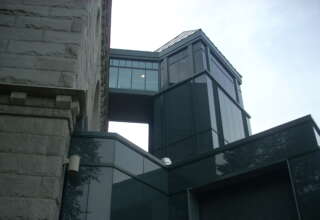
Women of Service
Men and, in particular, women are expected to dedicate their lives to these human service organizations, often at low pay and with the accompanying expectation of long hours of work. Members of these organizations perform services as if they were nuns or priests—the legacy of the Catholic Church’s initial emphasis on service to the underserved. Men and women working in these organizations are expected to do their jobs for the inherent worth of the services being provided, rather than for money or even public recognition. Like nuns, the women who work in human service agencies are often expected to forsake family or even friendships for late night or early morning service to others. Unionization of these agencies is unthinkable. When it does occur (for example, in school systems) the general public is rarely supportive, even though the working conditions for these men and women is often much worse than for factory workers — who are usually supported by the general public in their efforts to improve working conditions.
We also find remnant elements of the premodern emphasis on the integration of work and service in the emerging emphasis on volunteerism (George Bush (senior)’s Thousand Points of Light) during the early 1990s) in our society. Many men and women find their most meaningful work not in the corporate or governmental sectors of society, but rather in the contributions they make in the evenings or during weekends through churches, community service organizations, community action programs and informal helping hand programs. In the second in their extraordinary studies of American society, Robert Bellah and his four colleagues have spoken eloquently of the need for this emerging recognition:[lxx]
“American culture has focused relentlessly on the idea that individuals are self-interest maximizers and that private accumulation and private pleasures are the only measurable public goods. We have been blind to the way that institutions enable or cripple our capacity to be persons we most want to be. We need to understand historically that institutions stand in the way of our freedom. We need to understand how we failed to see that the virtue of autonomy, in the sense of personal freedom, can be realized only along with other virtues, such as care and responsibility.”
As Bellah and his colleagues have observed, many Americans have become disenchanted with most governmental agencies in their efforts to ameliorate major social problems, and witness the failure of large scale, global change efforts. Peter Drucker has similarly noted that: “For almost two centuries, we hotly discussed what government should do. We almost never asked what government can do. Now increasingly the limits and function of government will be the issue.”[lxxi]
The slogan, “Think globally, but act locally,” speaks to the need for broad-based systemic thinking about social problems. It also speaks to the need for committed and sustained action on a specific problem, in a specific location, serving a specific population, within a community context. These new commitments and concerns have led to the creation of the so-called third sector of our society—the world of volunteer action. The leaders of this sector have much to learn from stories told about the premodern emphasis on community and service to others. While the modern era has provided us with extraordinary tools to be able to think globally and has enabled us to escape the parochial perspectives of premodern man, they have not prepared us to act locally. To do this, we must reexamine the premodern communities, or create our own distinctive postmodern communities—a very difficult task indeed.
The disillusionment with government, the desired return to community, and an emphasis on concrete service is particularly prevalent among contemporary middle-class American males. These products of the modern era have spent most of their life pursuing individualistic, career goals, and now in their forties and early fifties find a growing need for more tangible, service-oriented work—particularly in a community setting. An informal survey of volunteer services in the San Francisco Bay Area revealed that many of the women who are volunteering for public service seek out membership on the board of directors of an agency, or assist with administrative functions. By contrast, men tend to seek out opportunities to provide direct services to clients. Rather than serving on a board, they want to counsel a young delinquent or help clean up a freeway.







